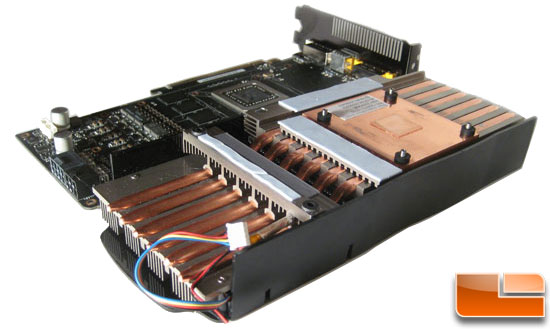ASUS Radeon HD EAH4890 HTDI/1GD5 Video Card
Final Thoughts & Conclusion
Unlike the ATI Radeon HD 4870, which provided a huge jump in performance over the prior Radeon HD 3870, the Radeon HD 4890 is only a modest speed boost over the prior Radeon HD 4870. Sure, the Radeon HD 4890s are hitting on air frequencies that the Radeon HD 4870 could hit with sub-zero cooling, but this surely isn’t a jump in performance like that seen with an architectural jump. This speed bump does, however, help AMD tackle the NVIDIA Geforce GTX 260 Core 216 and GeForce GTX 275 as seen in these tests. The Radeon HD 4870 surely is old hat, though, given how easily the Radeon HD 4890 overclocked. At 950 MHz core the Radeon HD 4890 has a whopping 26% frequency advantage over the Radeon HD 4870 at stock.
Priced at $189.99 after a $20 mail-in rebate on Newegg at the time of writing, the Asus EAH4890 HTDI/1GD5 is $35 more expensive than the ASUS GeForce GTX 260 216sp. Unfortunately, I don’t have a GeForce GTX 275 on hand to do a direct comparison with, but it wouldn’t have shaken things up too much versus the GeForce GTX 260 216sp. One thing to keep in mind, though, is the oddly low minimum FPS in a lot of tests with the Radeon HD 4890. I don’t know if it is this particular driver setup or my Windows install having something conflicting but both ATI cards would nose-dive when pushed heavily, so that will be something to consider.
ASUS has a 3-year warranty on the EAH4890 HTDI/1GD5. Given its much lower running temperatures than reference cards, I don’t imagine you will have much in the way of heat-related component failure. However, those 3 years can be critical compared to some of the competition having only a 2-year warranty. Ignoring the additional capacitor on the card, this card really just has that stellar heat sink to separate it from the horde of reference Radeon HD 4890s out on the market. What I don’t understand is why ASUS didn’t launch this card with much higher card-clocks like many in their TOP series. I was able to run the card at 950/1100 all day long, so why not launch the card at 925/1000? Regardless, you as the end-user should be able to easily hit 950/1100 with Catalyst Control or Smart Doctor.

You could buy a reference Radeon HD 4890 for $20 less and then void your warranty by removing the reference heat sink and installing a better aftermarket heat sink, or you can save yourself some time and trouble by letting ASUS do that for you with this card. I have my concerns about the heat sink design and how it would hold up in close proximity CrossFire scenarios but I can’t imagine it being any worse than the reference cooler. If you are looking for a cooler, then reference Radeon HD 4890 with much overclocking potential is a great option.
Legit Bottom Line: ASUS spices up the reference Radeon HD 4890 design with a more effective heatsink and additional power stability with the EAH4890 HTDI/1GD5.

Comments are closed.